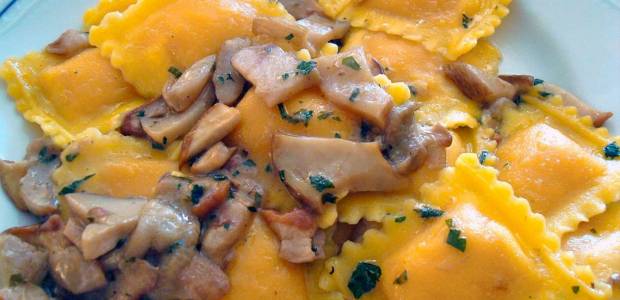Lingue
Il giornale dei giornali: Parma is UNESCO’s Creative City for Gastronomy. The first Italian city to be given such a recognition
da Lifegate
Thanks to its workshops, trattorias, food companies and restaurants, Parma, the capital of the Food Valley, received a great acknowledgement: it’s the first Italian city to be rewarded by UNESCO for its gastronomy.
Parma has been officially proclaimed by UNESCO a “Creative City for gastronomy”. It’s the first time that an Italian city gets this prestigious official recognition that UNESCO, the UN organisation for the preservation of world cultures, accords to cities that demonstrate unique abilities in gastronomy, which is the result of tradition, talent and innovation.
UNESCO’s Creative City network
UNESCO has just added Rome to its list of Creative Cities for the cinema and Parma for its gastronomy. The network includes more than 70 cities in 32 countries, including Bolonia (for music), Fabriano (for folk art) and Turin (for design). This acknowledgement came ahead of the official nomination put forward a few months ago in Paris. The protocol signed between the Italian Association of Municipalities (ANCI) the municipality and city of Parma and the Chef to Chef association represents the means that led to the recognition of the gastronomy of Parma and Emilia-Romagna as a bridge between the Mediterranean and continental cuisine. The other creative cities for gastronomy just proclaimed by UNESCO are Bergen in Norway, Belem in Brazil, Burgos in Spain, Phuket in Thailand.
History, culinary delights and consortia in Parma
Parma boasts excellent culinary foodstuffs and a unique network of companies and consortia of food producers. EFSA, the European Food Safety Authority, and Alma, the International School of Cooking managed by Gualtiero Marchesi, indeed, are both based in Parma. Another feather in the cap is the unique network of food museums. The giant pasta factory Barilla opened here its Academia, which houses a Culinary Institute and a gastronomic library containing over 8500 books and 4750 historical menus.
The person who announced the news to the mayor of Parma Federico Pizzarotti on 11 December was Irina Bokova, Director-General of UNESCO. The procedure, which started in the spring, was accomplished on 10 November with the presentation of the nomination of Parma in the presence of many representatives of the UN in Paris. Along with the City of Parma – whose Department for Productive Activities and Tourism coordinated the entire process – almost all the institutions and associations of the city worked for it. “Parma is on the roof of the world. Ours is the first Italian city in history to become UNESCO’s heritage site for Gastronomy – writes Mayor Federico Pizzarotti full of joy – despite what all the prophets of misfortune, our idea was rated the best among those presented by the different nominees of the Planet. For years it has been a common thought that Parma would have a bleak future, that it had no more aces in its sleeve. But I’ve always thought that there’s a side of Parma which is bright and intelligent, a side that wants to stand out.”
“I’m particularly satisfied with this result – the Ministry of Agricultural Policies Maurizio Martina said – the visibility of UNESCO and its Creative Cities will help not only Parma but the entire Italian food industry to work against the phenomenon of Italian Sounding which makes so that our products are some of the most counterfeited in the world. UNESCO said that food is not only a commercial product but also the symbol of a community, the result of a process of identity representation that demonstrates our creativity even in this field. Nobody will be able to be as good as those who produce food and who are able to make it recognisable worldwide”.
From tortelli to Parmesan cheese, from mushrooms to culatello up to tortél dóls: Parma’s food delights
On the tables of Parma and the province of Parma there are Parmesan cheese, cold cut, cured meat realised with traditional handcrafted techniques. Parma ham whose quality depends on the ageing process taking place in the windy Langhirano hills and Culatello di Zibello a type of cured meat that retains the moist aroma of the floodplains of the Po Valley. Salame di Felino and Spalla Cotta di San Secondo (two types of cured meat) are often consumed with torta fritta, a rectangle-shaped type of puff pastry made of water and flour that is soft and crunchy at the same time and with Lambrusco red wine. The most typical dishes include cappelletti or anolini (two types of dumpling) in soup and tortelli with greens or pumpkin. Among the main courses trippa alla parmigiana (tripe with tomato purée and Parmesan cheese) and vécia, a dish with potatoes, peppers and minced meat are still in vogue, while in the mountains the traditional delights of the bush include the mushrooms of Borgotaro that are suitable with the Fortana del Taro red wine, an ancient grape variety of Bassa Parmense.
A few days ago last year, head-trained bush vines of Pantelleria entered the list of Intangible Cultural Heritage by UNESCO, the first agricultural practice in the world to achieve this recognition. And last year the first vineyard landscape was also inscribed in UNESCO’s cultural heritage list, the Langhe-Roero and Monferrato. Negotiations were led by Professor Pierluigi Petrillo, according to whom entering the network of Creative Cities for Gastronomy “means getting a global recognition for traditional agricultural food products, so that these cities can develop with other cities already included in the prestigious network, sharing and cooperation projects aimed at enhancing our Made in Italy”.
Translated by FRANCESCA CLEMENTE









